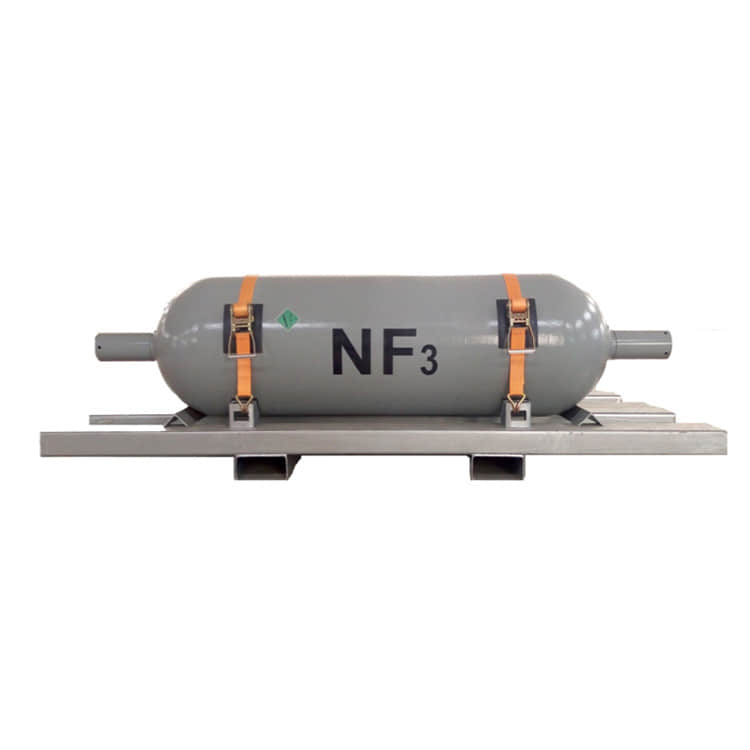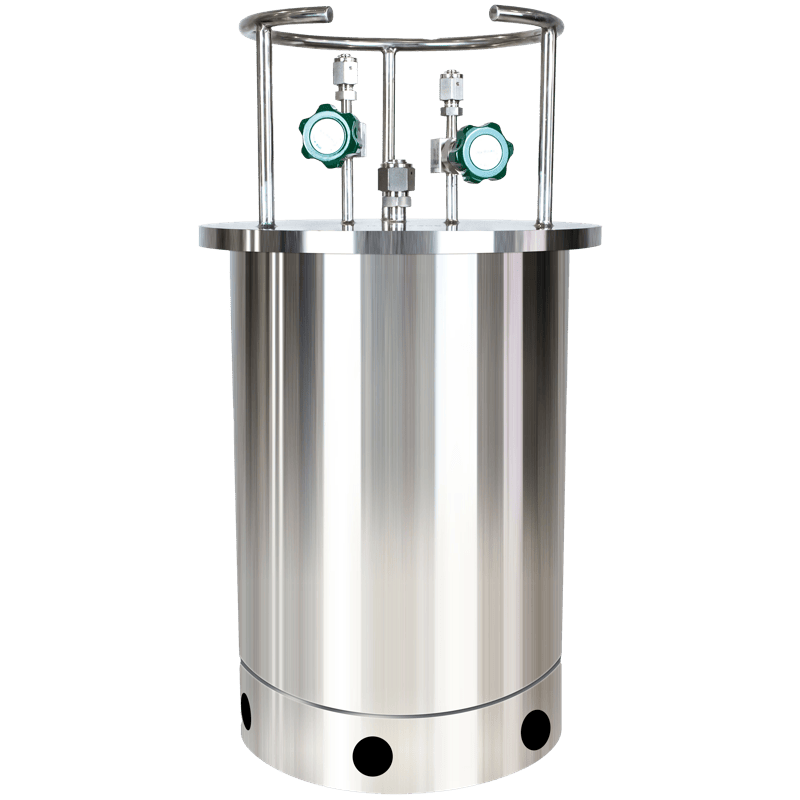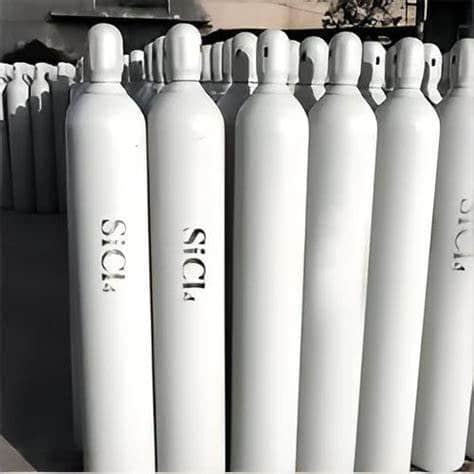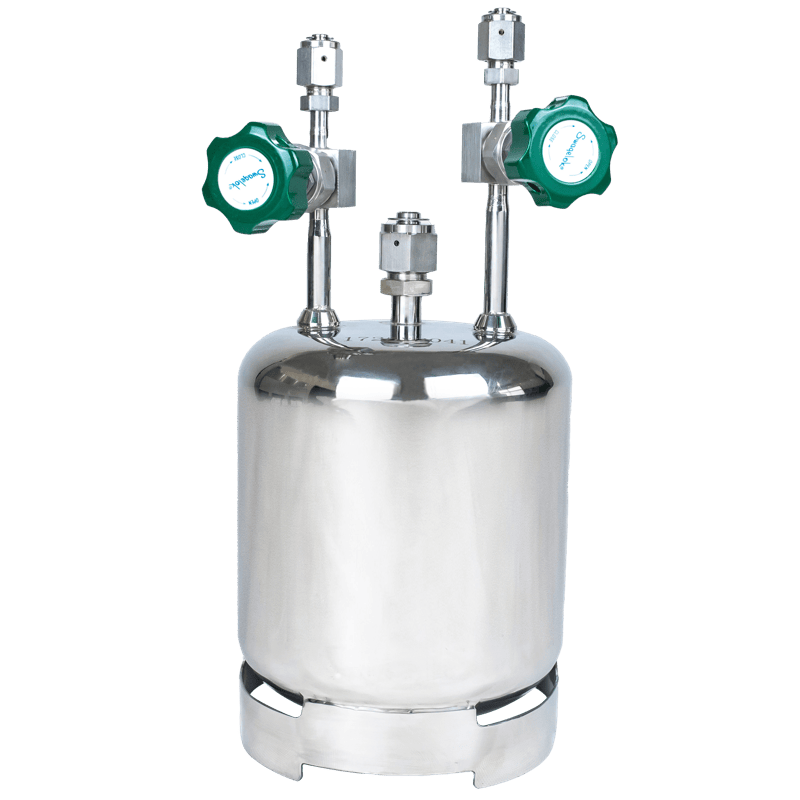NF3 is mainly used for cleaning chemical vapor deposition (CVD) units. Nitrogen trifluoride can be used alone or in combination with other gases as etching gases for plasma processes, e.g., NF3, NF3/Ar, NF3/He for etching the silicon compound MoSi2; NF3/CCl4 and NF3/HCl are used for etching both MoSi2 and NbSi2. Nitrogen trifluoride has a wide range of applications in the electronics industry, mainly as a plasma etching gas and reaction chamber cleaner, suitable for manufacturing fields such as semiconductor chips, flat screens, glass fibers, photovoltaic cells, etc. In the semiconductor manufacturing process, nitrogen trifluoride can serve as a plasma etching gas to etch silicon and silicon nitride. Compared with other etching gases, nitrogen trifluoride has a higher etching rate and selectivity, and is non polluting to the surface. In the etching of integrated circuit materials with a thickness less than 1.5um, nitrogen trifluoride has excellent etching rate and selectivity, leaving no residue on the surface of the etched material. At the same time, nitrogen trifluoride is also an excellent plasma etching gas, which has a higher rate and selectivity for etching silicon and silicon nitride than carbon tetrafluoride and a mixture of carbon tetrafluoride and oxygen. In summary, nitrogen trifluoride is an important gas in the electronics industry and has broad application prospects. With the continuous progress of technology, the demand for nitrogen trifluoride will continue to increase.
Density 1.361 g/cm3
Boiling point -129 ° C
Melting point -207 ° C
Molecular formula F3N
Molecular weight 71.00190
Accurate quality 70.99830
PSA 3.24000
LogP 0.94190
Appearance: Colorless gas
Refractive index 1.187
Storage conditions
1. NF3 gas does not corrode ordinary metals below 70 ℃, so steel, copper, nickel, aluminum, and stainless steel can all be used as packaging materials below 70 ℃. Fill with steel cylinders and aluminum alloy cylinders, and inspect the cylinders every two years. According to the regulations for the transportation of toxic high-pressure liquefied gases, foreign regulations allow transportation by car or train, but not by plane. The filling coefficient of gas cylinders shall not exceed 0.01.
2. Storage precautions: Store in a cool and ventilated dedicated warehouse for toxic gases. Keep away from sparks and heat sources. The temperature of the warehouse should not exceed 30 ℃. It should be stored separately from flammable (combustible) substances, reducing agents, and edible chemicals, and mixed storage should be avoided. The storage area should be equipped with emergency response equipment for leaks.
Stability
1. High purity NF3 has almost no odor, but commercial NF3 has a pungent odor due to its trace amount of active fluorine. Critical temperature gas. NF3 is a thermodynamically stable oxidant, with a reaction activity equivalent to oxygen at approximately 350 ℃. At high temperatures, NF3 can react with many elements to generate N2F4 and corresponding fluorides. Nitrogen trifluoride is a toxic substance, and its main harm is due to inhalation in the respiratory tract.
2. Stability and stability
3. Prohibited reducing agents, flammable or combustible materials
4. Avoid heating under contact conditions
5. Polymerization hazard: non polymerization
Boiling point -129 ° C
Melting point -207 ° C
Molecular formula F3N
Molecular weight 71.00190
Accurate quality 70.99830
PSA 3.24000
LogP 0.94190
Appearance: Colorless gas
Refractive index 1.187
Storage conditions
1. NF3 gas does not corrode ordinary metals below 70 ℃, so steel, copper, nickel, aluminum, and stainless steel can all be used as packaging materials below 70 ℃. Fill with steel cylinders and aluminum alloy cylinders, and inspect the cylinders every two years. According to the regulations for the transportation of toxic high-pressure liquefied gases, foreign regulations allow transportation by car or train, but not by plane. The filling coefficient of gas cylinders shall not exceed 0.01.
2. Storage precautions: Store in a cool and ventilated dedicated warehouse for toxic gases. Keep away from sparks and heat sources. The temperature of the warehouse should not exceed 30 ℃. It should be stored separately from flammable (combustible) substances, reducing agents, and edible chemicals, and mixed storage should be avoided. The storage area should be equipped with emergency response equipment for leaks.
Stability
1. High purity NF3 has almost no odor, but commercial NF3 has a pungent odor due to its trace amount of active fluorine. Critical temperature gas. NF3 is a thermodynamically stable oxidant, with a reaction activity equivalent to oxygen at approximately 350 ℃. At high temperatures, NF3 can react with many elements to generate N2F4 and corresponding fluorides. Nitrogen trifluoride is a toxic substance, and its main harm is due to inhalation in the respiratory tract.
2. Stability and stability
3. Prohibited reducing agents, flammable or combustible materials
4. Avoid heating under contact conditions
5. Polymerization hazard: non polymerization







